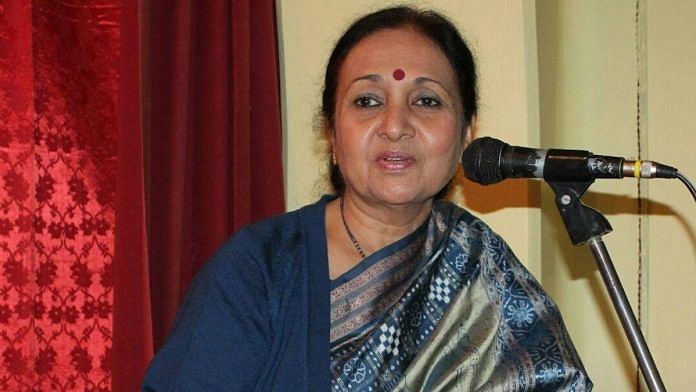Getting an independent charge of a subdivision as an ASP felt like going back to square one. The same doubts that were raised before my field posting were aired again. Where can we post a lady officer? What kind of work can she do? What will be safe for her?
All my batchmates were given charge of a subdivision; my husband, Rakesh, was posted as ASP Town, Patna. But I was all but told to be happy that I had done a field training. IG Rajeshwar Lal posted me as ASP, CID (Criminal Investigation Department). It was essentially a desk job.
In our time, IPS officers in Bihar used to be promoted to the rank of SP within four years of joining service. As I belonged to the 1976 batch, at the end of 1980, I would be promoted as SP. But without a field posting as ASP, I knew I would find it hard to get a district charge as SP. I would end up pushing files and making reports for a lifetime. After undergoing the rigorous NPA and district training just like my colleagues, I felt cheated. What was it that I lacked, after all?
There was no precedent of an IPS officer getting posted as ASP in the CID. But here I was, sitting in a dingy little cubicle made of wooden partitions, crammed into a tiny space next to the noisy CID control room. It was quite demoralizing.
Also Read: Jamkhed was a picture of death—until these two doctors showed up
One of my jobs was to read special report (SR) files. It was mandatory for SPs and SDPOs (sub-divisional police officers) of every district to personally supervise important cases like murder, dacoity or atrocities against ‘lower castes’, etc., and send their supervision notes to the CID for analysis and comments. I had to read all these SR files and offer comments on the investigation, which were then presented to senior CID officers for their perusal and direction.
Supervision notes would pour in from all the districts of Bihar, sometimes as many as thirty a day. Although I was dejected at being stuck in the CID, I would read the cases diligently and record my comments.
The weeks rolled into months, I kept sitting at my desk. ‘Why have I been banished here?’ I kept asking myself; there was nobody I could turn to for help. It had been nearly six months since our field training, in another six months we would become SPs. I was getting quite desperate when, as luck would have it, Rajeshwar Lal retired and S.K. Chatterjee took over as IG, Bihar police. He had four daughters, one of whom, Palash, had been with me in school and college. I gathered my courage and went to Mr Chatterjee’s office.
‘Sir, my career will be finished,’ I said without preamble. I had his attention. I could be a bit frank with him because he was mild-mannered and I had known him all my life as Palash’s father; I used to call him ‘uncle’. I told him how, despite having completed my field training, I was not awarded a district posting.
He was quite taken aback to learn that I was languishing in the CID. ‘Why, why?’ he asked me in surprise. He promised to post me to a subdivision.
True to his word, within a couple of days, Mr Chatterjee passed an order posting me as ASP Danapur without waiting for a government notification. I heaved a sigh of relief. Finally, I would be doing the work for which I had joined the force.
Also Read: Security guards to UPSC aspirants to Bollywood stars, why Bihari tag won’t leave them
Located just outside Patna, Danapur is a large subdivision with both semi-urban and rural areas. As soon as I was posted as ASP Danapur in January 1980, I knew I would have to quickly prove myself to my seniors, the local thanas as well as the subordinate ranks that I was as capable of doing a field job as any male IPS officer.
I think I managed that through some meticulous casework, a thick skin and a woman’s intuition.
The day I arrived in Danapur, that very afternoon, a murder was reported from Rampur Nagwa village under Paliganj police station. There had always been caste tension between the Bhumihars and Yadavs. Naxalism was just raising its head in those parts. As soon as I took charge, I had to leave with a team to supervise the case.
The victim was an aged landlord. The body lay in a field rippling with crops, arms and legs splayed out. His throat had been slit. After studying the crime scene, we started looking for clues around the field. Amid the stalks of wheat, we spotted a large footprint in the soft soil.
An elderly circle inspector, K.R.P. Sinha, was part of my team. I discussed with him that we should lift that footprint properly as a vital piece of evidence. Fresh from training, I showed my team how to collect footprint evidence, the right way of labelling an exhibit and the correct procedure for dispatching it. The other officers watched me curiously, appearing impressed that I knew so much about scientific methods of investigation.
Finding a footprint was very well, but we needed a suspect. I decided to check whether the victim was embroiled in a land dispute or had enmity with anybody in the village. We started collecting intelligence from the local chowkidars. We found out that there were some people working in the field with the victim who were witness to the crime. But they had fled, too scared to talk to the police. We took the villagers into confidence and painstakingly convinced some of them to give us eyewitness accounts. They provided names of the people they had recognized. After verifying their whereabouts, we were able to connect them to the case.
Also Read: Don’t just look at defence budget. India’s intelligence services, police desperately need funds
The caste rivalry between the Bhumihars and the Yadavs added another dimension to the case, but I decided I would not bother about caste equations. We conducted massive raids, checking every household in that village irrespective of caste. We finally managed to arrest the people involved and chargesheet the accused.
When the murder happened, the old-timers in the police station told me, ‘Madam Sir, yeh toh aapko salaami de rahein hain (They are giving you a salute).’ It was a common notion that when a police officer is posted to an area, this is how the criminals welcome you, with a message. Hopefully, the raids and the chargesheet were understood by those criminals as my ‘salaami’ to them too.
Of course I wanted to bring the guilty to book, but I also wanted to send a message to the local population that I was not one to go easy on criminals; that I would not tolerate a breach of law and order; that I would not be partisan. The message I wanted to send to my men was that I expected them not to get involved in the caste politics of the area.
Going into the villages in my uniform, conducting raids, leading my men from the front and taking charge from Day 1 were all valuable experiences that did much to bolster my confidence, besides building my image as a tough cop. Thankfully, I could feel my team beginning to look up to me and accepting me as an officer and a leader. Sentiments that my superiors didn’t quite share.
Yet.

This excerpt from Manjari Jarhuhar’s ‘Madam Sir’ has been published with permission from Penguin Random House.



